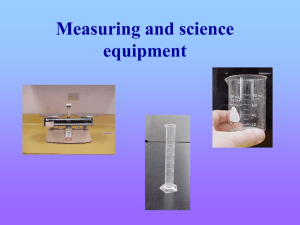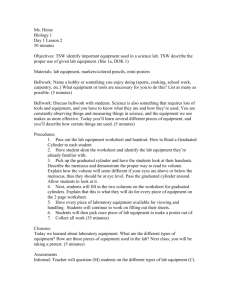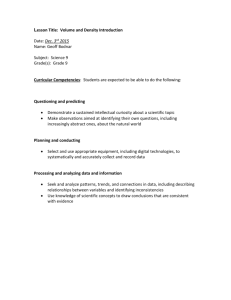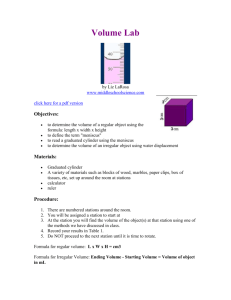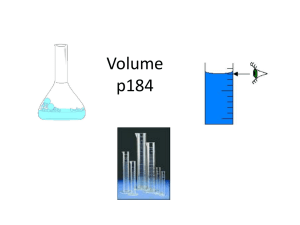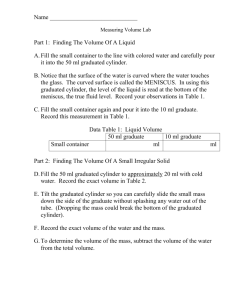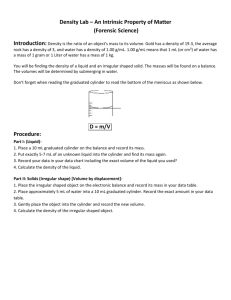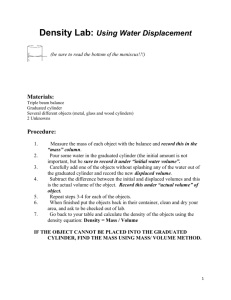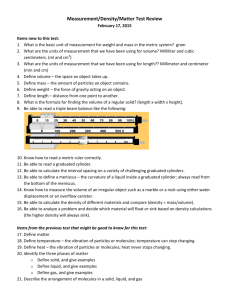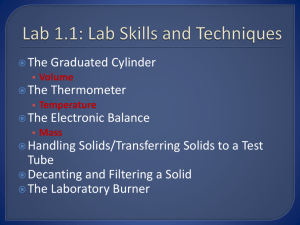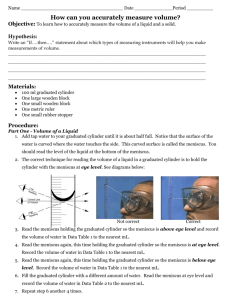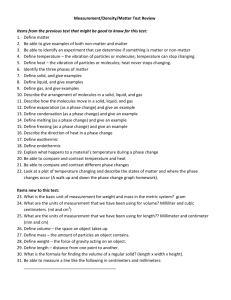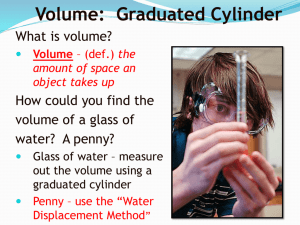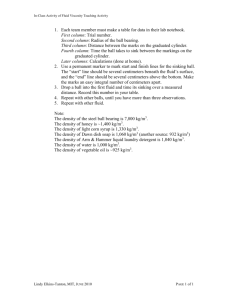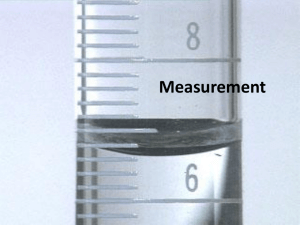Metric - Volume Lab KEY
advertisement
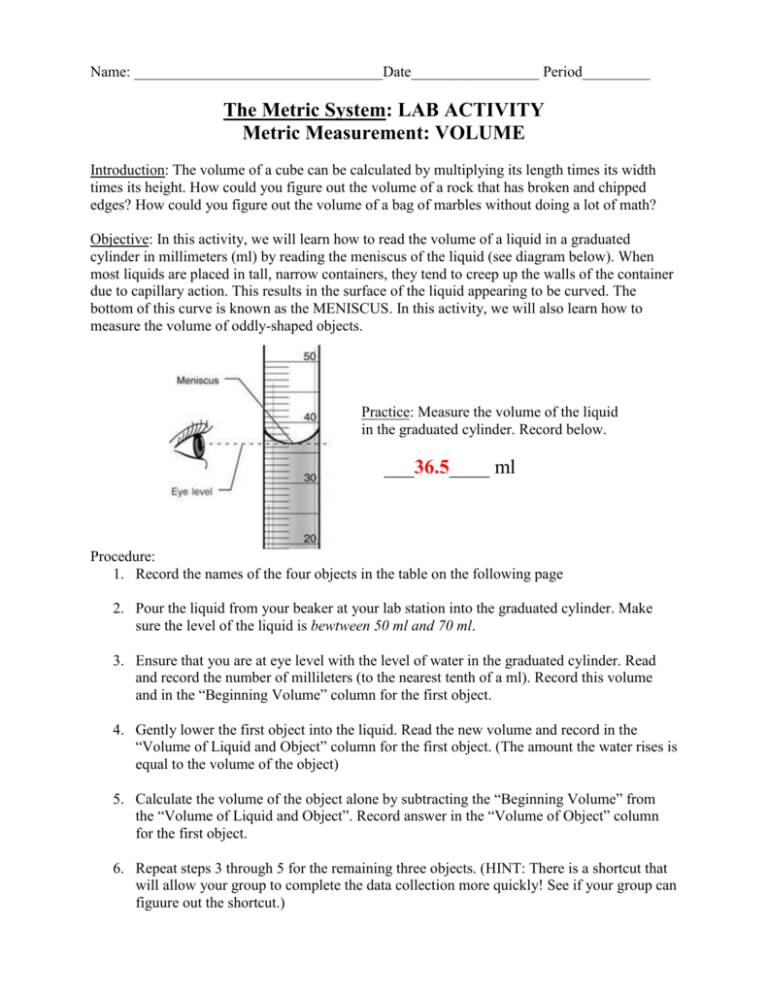
Name: _________________________________Date_________________ Period_________ The Metric System: LAB ACTIVITY Metric Measurement: VOLUME Introduction: The volume of a cube can be calculated by multiplying its length times its width times its height. How could you figure out the volume of a rock that has broken and chipped edges? How could you figure out the volume of a bag of marbles without doing a lot of math? Objective: In this activity, we will learn how to read the volume of a liquid in a graduated cylinder in millimeters (ml) by reading the meniscus of the liquid (see diagram below). When most liquids are placed in tall, narrow containers, they tend to creep up the walls of the container due to capillary action. This results in the surface of the liquid appearing to be curved. The bottom of this curve is known as the MENISCUS. In this activity, we will also learn how to measure the volume of oddly-shaped objects. Practice: Measure the volume of the liquid in the graduated cylinder. Record below. ___36.5____ ml Procedure: 1. Record the names of the four objects in the table on the following page 2. Pour the liquid from your beaker at your lab station into the graduated cylinder. Make sure the level of the liquid is bewtween 50 ml and 70 ml. 3. Ensure that you are at eye level with the level of water in the graduated cylinder. Read and record the number of millileters (to the nearest tenth of a ml). Record this volume and in the “Beginning Volume” column for the first object. 4. Gently lower the first object into the liquid. Read the new volume and record in the “Volume of Liquid and Object” column for the first object. (The amount the water rises is equal to the volume of the object) 5. Calculate the volume of the object alone by subtracting the “Beginning Volume” from the “Volume of Liquid and Object”. Record answer in the “Volume of Object” column for the first object. 6. Repeat steps 3 through 5 for the remaining three objects. (HINT: There is a shortcut that will allow your group to complete the data collection more quickly! See if your group can figuure out the shortcut.) OBJECT Nail (Head Down) SAMPLE DATA VOLUME OF LIQUID BEGINNING VOLUME AND OBJECT (Liquid Only) VOLUME OF OBJECT 61.3 ml 60.0 ml 1.3 ml Die 64.8 ml 61.3 ml 3.5 ml Marbles 69.0 ml 64.8 ml 4.2 ml Pennies 70.1 69.0 ml 1.1 ml Questions: 1. Did your group figure out the shortcut? You can use the final volume (Volume of Liquid and Object) asthe beginning volume of for the next object. 2. If so explain how the shortcut allowed your group to complete the activity more quickly. You did not have to pour the water out each time and record a new starting volume for each object. 3. What kind of error would result if you read the liquid volume where the liquid touches the wall of the cylinder rather than the meniscus? The volume you would meausre would be higher each time. (NOTE: If you were measuring out a specific amount of water for an experiment, this would cause the volume to be too high but how would it really affect the results of this lab?) 4. How does the “measuring volume by difference” method compare with measuring volume using math for these odd-shaped objects? Explain which method would be easier. It is much easier to determine the voulme using “volume by Difference” because you do no have to measure many different lengths and try to calculate the voulme, you just have to measure how much the water went up after the object was placed in the water.




